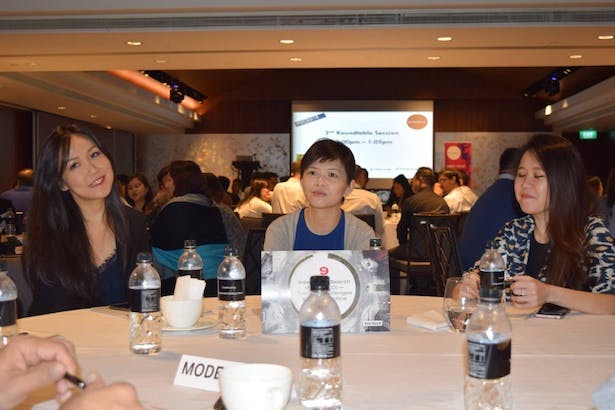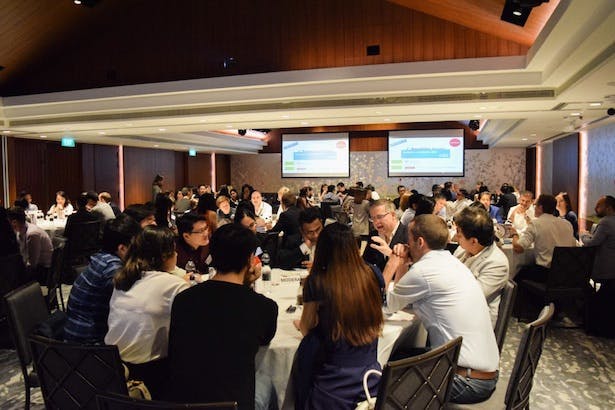The reason for their perpetually keen interest in the topics is that Google, by far the largest search provider in most markets, keeps its search and ad ranking algorithms shrouded in secrecy. Consequentially, one of the best ways for marketers to find out about SEO and SEM optimization techniques is to hear what has worked for other marketers.
So, what SEO and SEM tactics are working for marketers these days? And how are they organizing their search marketing teams around them?
To find out, Econsultancy recently held roundtable discussions on integrated search marketing with dozens of client-side marketers at Digital Cream Singapore. At a table hosted by Ajit Aras, Executive VP, Sharp, participants discussed their SEO/SEM struggles, successes and insights throughout the day. Below is a summary of what was said on the day.
The state of SEO
Participants first discussed the importance of SEO, in light of all the other digital marketing tactics which are available to them.
The verdict was that SEO is still a very important tactic for brands. The main objective of investing in SEO remains increasing website traffic, but marketers said that they are tending to use it for top-of-funnel acquisition.
Challenges do remain, however, particularly with convincing IT to be as motivated as marketers to optimize the company websites for SEO.

On-page SEO
There are three main things which marketers should focus on for ensuring that their web pages are SEO-ready, attendees noted. They are the relevance of the content, the accessibility of all sections of the website, and the ‘updated-ness’ of the site itself.
Additionally, marketers should make every effort to use simple words to explain their products and services in their content. B2B marketers felt that avoiding technical words is difficult for specialized industries but agreed that minimizing jargon and avoiding flowery ‘marketing speak’ was a worthwhile goal.
Off-page SEO
Participants agreed that backlinks, or links to your content from other high-quality sites, was still essential for keeping and maintaining high rankings on search engines.
Backlinks, however, are notoriously difficult to get these days, according to attendees, and so marketers need to devise strategies to encourage them.
One simple way discussed was for brands to have multiple sites, each of which linked to each other. Another participant suggested that brands should publish sponsored content on public media and highly-rated blogs. Wikipedia pages with links to brand sites can also help boost search engine ranking, according to one participant, despite the fact that Wikipedia links have ‘nofollow’ tags on them.
More sophisticated ways to encourage backlinks included collaborating with partners and clients on mutual backlinks. If a brand is purchasing a product or a service from another company with a high-quality site, then marketers should ask for a link indicating a relationship.
According to one delegate, ‘backlink bartering’, where two unrelated companies agree to link to each other has started to happen, although some participants felt that this could be a dangerous practice which could incur a dreaded SEO penalty.
A more acceptable practice among marketers is to encourage customers with incentives to produce ‘user-generated content’ which linked back to the brand site, providing greater SEO authority and, ideally, more traffic.

Managing SEO
Marketers at the event stated that day-to-day SEO is now mostly handled by agencies, with few exceptions. Participants agreed that this was not ideal as agencies can struggle when trying to balance SEO best practices with content relevancy. But, because agencies are better at keeping up with the speed of SEO trend shifts, most felt that using agencies was the best practice and issues can be overcome with regular scheduled meetings.
Some attendees indicated that there was a trend to bring SEO in house to increase content relevancy, but that brands who are trying to do so are finding it difficult to hire and retain talent.
One marketer posited a compromise – brands could outsource the SEO function, but have agency staff onsite permanently so that they better understand the business for which they are trying to optimize the SEO.
SEM campaigns
The main debate for SEM was whether brands should have distinct search ad campaigns or have SEM ‘always on’. Participants said that ‘always on’ search marketing is the most popular SEM approach currently but said that brands should have occasional upswings during holidays and other seasonal events. One attendee said that they had a continuous budget for SEM, with added funds for focus products.
Another discussion centred on whether brands should manage their own SEM ad budget or use an agency which charges a management fee. One delegate said that they had measured the two strategies and found that the results from using an SEM agency almost always justified the management fees.

How SEO and SEM work together
Finally, marketers discussed whether search was really ‘integrated’ or whether SEO and SEM are actually two distinct disciplines.
Across the board, attendees said that the two are closely linked. SEM helps SEO by raising site ranking on search engines by increasing site visits and backlinks. Then, once traffic has hit a certain level, marketers have found that SEO can help brands reduce their spending on SEM.
One of the goals of SEO, it seems, is to reduce the amount that brands have to pay to get people to visit their site. Attendees agreed, though, that this is a long-term goal and is something which marketers have to work hard toward to achieve.
A word of thanks
Econsultancy would like to thank the Integrated Search table host, Ajit Aras, Executive VP, Sharp, as well as the dozens of search engine marketers who participated in discussions on the evergreen topic of SEO and SEM trends, tips and tactics.
We hope to see you all at future Econsultancy Asia Pacific events!


thanks sharing this helpful article for seo & sem…keep it up guys